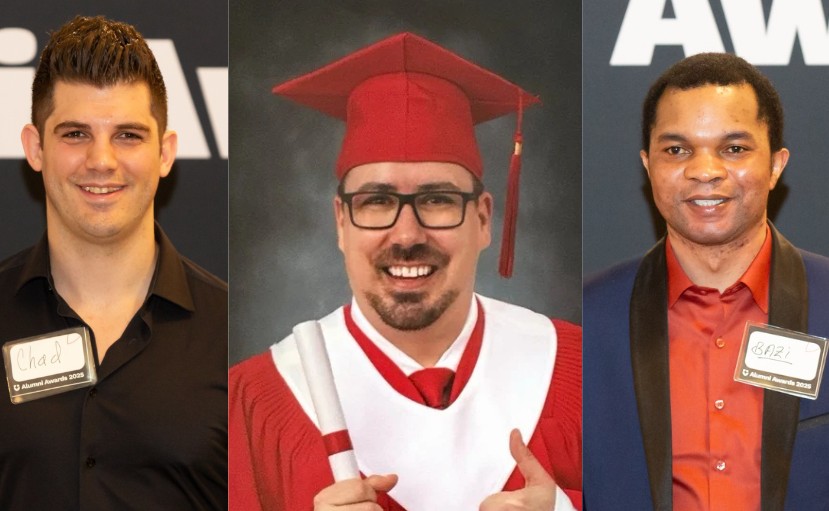Work-Integrated Learning in Action: An Alumni Perspective
August 22, 2025

Looking to stand out as a new grad? The classroom gives you the knowledge, but putting that knowledge into action is what makes you truly career ready. That’s why NorQuest integrates work-integrated learning (WIL) into many programs, bridging classroom lessons with real-world experience.
Through placements, co-ops, and other hands-on experiences, students can see first-hand what different workplaces are like, test their skills, and refine their career goals. It’s not just about checking a box on a resume; it’s about building the tools, relationships, and insights that make students stand out in the job market.
From Classroom to Career: Khayla’s WIL Experience at NorQuest
Business Administration graduate Khayla Villes understood at the outset that she wanted to take a WIL co-op placement to enhance her future job prospects. “Deciding to take a WIL co-op placement was important for me as an international student,” shares Khayla. “I knew that entering the workforce without any office or course-related experience might make job hunting more challenging after graduation.”
Khayla’s take on its value is bang-on, according to Norquest Career Coach Ivie Gbenga-Obadimeji. Without job experience or a professional network, students can find it challenging to enter the workforce, and she highly recommends that students give themselves an edge by participating in WIL if possible. “WIL gives students real work experience, professional references, and the practical skills that employers are actively looking for,” she says. “It helps build confidence, employability skills, and a stronger understanding of their chosen field.”
A co-op tailored to growth
Khayla didn’t have to go far for her first work experience, joining NorQuest’s Advancement team in administrative support. Khayla learned through her work experience what she might look for in a future workplace. “It was a great experience because of the people I worked with and the work itself,” she says. While she started with administrative tasks like email monitoring and template revamping, she quickly had the flexibility to explore her creativity by doing tasks such as editing and producing videos, for example.
She appreciated being placed in a workplace that understood that she was there to grow. “Being able to share what I wanted to learn and improve on made the experience really meaningful,” she notes.
Building confidence and skills
Her success in the placement came from more than just skills; it came from an attitude of constant improvement. “Even if I don’t have every skill yet, trying something new is always an opportunity to learn,” Khayla explains. The placement helped her step out of her comfort zone and build confidence. Her humility and willingness to take direction also set her apart. “Students who are proactive, professional, and open to feedback tend to thrive,” says Ivie. “Being willing to learn on the job and ask questions is just as important as technical knowledge.”
Overcoming challenges
Perfectionism posed a challenge for Khayla at first. “Accepting that I don’t know everything was difficult,” she admits. “It took openness to making mistakes and having honest conversations with my manager about areas I needed support in. The WIL program’s goal-setting component helped me track my progress on the skills I wanted to develop, which made it easier to see growth over time and stay motivated.”
Her experience reflects common challenges for students entering the workforce for the first time. Ivie notes that many students face hurdles such as adjusting to workplace culture, understanding expectations, and managing time. But she emphasizes that WIL is designed to help students learn how to be part of the workplace. “Everyone starts somewhere. Focus on learning, don’t be afraid to ask questions, and treat it as a stepping-stone to your career,” she says.
Shaping career direction
Khayla feels that her WIL placement didn’t just build skills; it shaped her career. “It gave me trust in myself and my abilities,” she says. “I now have transferable skills that make it easier to adapt across industries or roles, and it clarified where I excel and what I want to develop further.”
Advice for future students
Now a graduate with real work experience on her resume from her WIL opportunity, Khayla has no regrets about her decision. “WIL placement takes extra effort and may involve some financial considerations, but it’s an investment in your future,” Khayla says. For students who are unsure about WIL, she encourages them to seek guidance from program advisors, the career centre, or past WIL participants, be strategic in their job search, and take advantage of career centre services like resume reviews and mock interviews. Her final advice for a future WIL student? “Believe in yourself, stay open to learning, and the opportunities will follow.”
Interested in WIL at NorQuest College?
Khayla’s experience shows how WIL can open doors, build confidence, and help shape your career direction. Ready to see how work-integrated learning can fit into your program? Connect with NorQuest’s Career Centre to learn more, or email careercentre@norquest.ca.


